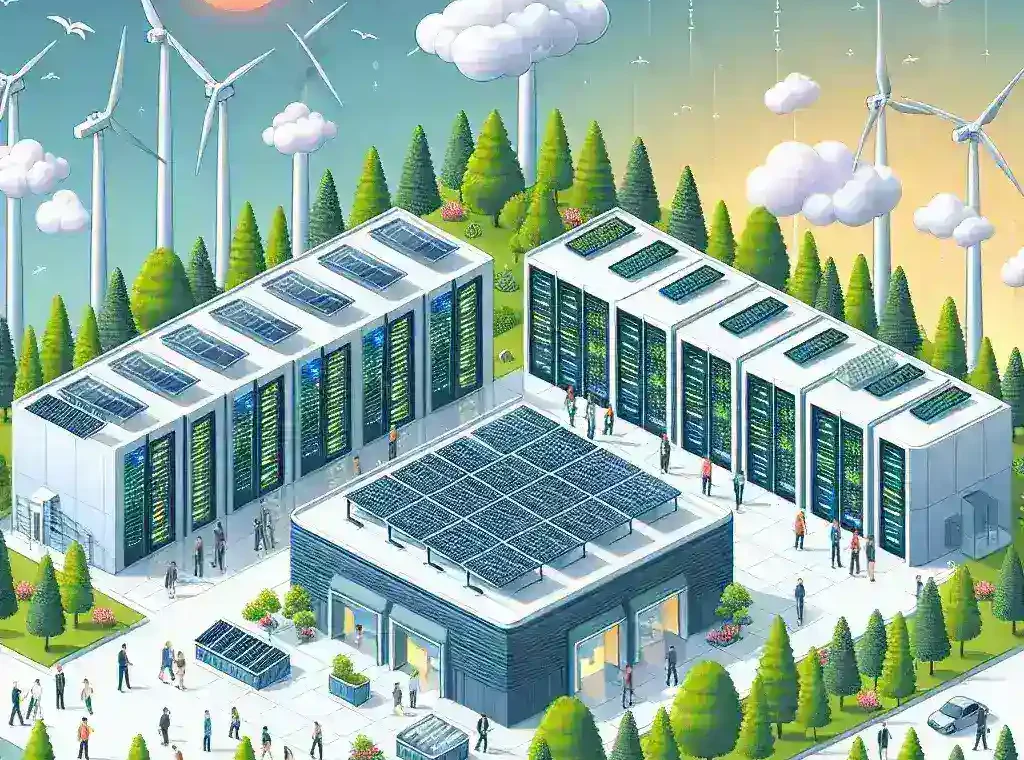Introduction
In an era marked by a growing consciousness towards environmental sustainability, Microsoft Azure has taken a significant step by opening new carbon neutral data centers across the United States. This initiative not only reinforces Microsoft’s commitment to reducing its carbon footprint but also sets the stage for a new standard in the tech industry. As organizations increasingly turn to cloud services, understanding the implications of Azure’s green initiatives is crucial for businesses and consumers alike.
The Rise of Carbon Neutrality
Carbon neutrality refers to achieving a balance between emitting carbon and absorbing carbon from the atmosphere in carbon sinks. As global temperatures rise and climate change accelerates, the urgency for businesses to adopt sustainable practices has never been more critical. With carbon emissions being a leading factor in climate change, the tech industry, particularly cloud service providers like Microsoft Azure, has a pivotal role in reducing their environmental impact.
Microsoft’s Sustainability Vision
Microsoft has set an ambitious goal to be carbon negative by 2030. This means that the company plans to remove more carbon from the environment than it emits. The opening of carbon neutral data centers is a crucial step in their roadmap towards this goal. These centers will operate on renewable energy sources, significantly lowering the carbon emissions traditionally associated with data center operations.
Key Features of the New Data Centers
- 100% Renewable Energy: Microsoft Azure’s new data centers will be powered entirely by renewable energy sources, including solar and wind, ensuring that operations do not contribute to fossil fuel consumption.
- Advanced Cooling Techniques: To minimize energy usage, the data centers will implement innovative cooling techniques, reducing the need for traditional air conditioning systems.
- Carbon Offset Initiatives: For any emissions that cannot be eliminated, Microsoft has committed to investing in carbon offset programs that support reforestation and renewable energy projects.
- Energy Efficiency Standards: The design and construction of these data centers adhere to the highest energy efficiency standards, optimizing their overall environmental performance.
The Benefits of Carbon Neutral Data Centers
Opening carbon neutral data centers brings a multitude of benefits, not only for Microsoft but also for cloud consumers and the environment.
Environmental Impact
By reducing reliance on non-renewable energy sources, Microsoft Azure is leading the way towards a more sustainable future. The use of renewable energy significantly lowers greenhouse gas emissions, contributing to global efforts against climate change.
Business Advantages
For businesses utilizing Azure’s services, opting for carbon neutral data centers can lead to enhanced corporate responsibility. Companies can demonstrate their commitment to sustainability, which is increasingly important for consumers and stakeholders.
Regulatory Compliance
As governments worldwide push for stricter environmental regulations, companies using Azure can benefit from compliance with current and future laws concerning carbon emissions.
Challenges Ahead
Despite the significant benefits, there are challenges that Microsoft Azure may face in achieving its sustainability goals.
Infrastructure Costs
Transitioning to renewable energy sources and building efficient data centers can incur significant costs. While these investments are necessary for long-term sustainability, they can pose financial challenges in the short term.
Supply Chain Management
Ensuring that all components of the data centers are sourced sustainably is vital. This requires rigorous vetting and monitoring of suppliers to ensure compliance with Microsoft’s sustainability standards.
Future Predictions
As the demand for cloud services continues to rise, it is expected that more tech companies will follow Microsoft Azure’s lead in implementing carbon neutral practices. The trend toward sustainability in the tech sector will likely drive innovations in energy efficiency and renewable energy technologies.
Conclusion
Microsoft Azure’s opening of new carbon neutral data centers in the U.S. marks a transformative moment in the tech industry’s approach to sustainability. By committing to renewable energy and embracing advanced technologies, Microsoft is not only improving its operational efficiency but also setting an example for others to follow. As businesses and consumers increasingly prioritize sustainability, initiatives like these will be crucial in promoting a healthier planet.

